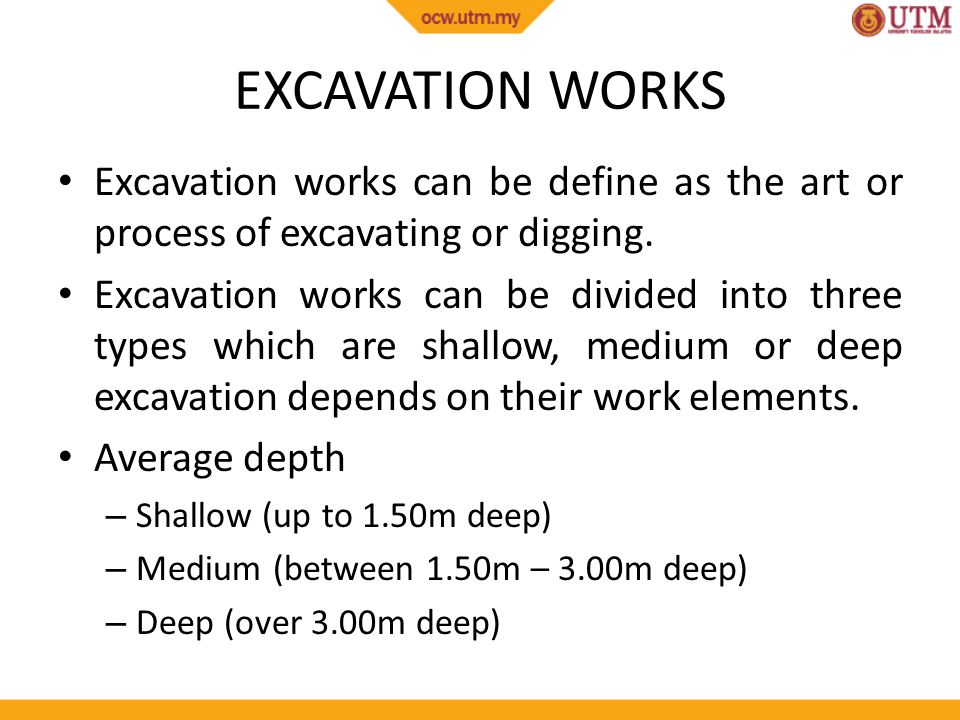Mini Excavator - The Facts
Wiki Article
The 5-Minute Rule for General Contractor
Table of ContentsNot known Factual Statements About Mini Excavator General Contractor Can Be Fun For AnyoneDemolition Things To Know Before You BuyThe Best Strategy To Use For Grading ContractorsThe Only Guide to Excavation Contractors Near Me


Scrapers or Pans excavate dirt in one place, haul and also dump the soil in one more place (excavator). It is challenging to match the efficiency of scrapers for cut/fill soil procedure if the haul range is much less after that a mile. Scrapers are normally pulled by a rubber tire wheel tractor and also are sometimes pressed through the cut area by a bulldozer.
There are lot of times that scrapes are not made use of for website grading and a dump vehicle is used: the haul may be to long, the haul may go across roadways where scrapes are not allowed, hard rock might be come across, tools accessibility, etc. Unload trucks remain in typical use and probably call for little conversation.
"Rock body" beds, on the various other hand, have no tailgates and also can dispose any kind of size rock, although their quantity ability is diminished. Compaction Tools raises the density of the dirt and in some cases gives a smooth, rolled surface area.
The smart Trick of Excavator That Nobody is Talking About
From a basic examination pit to percussion drilling to core drilling the proprietor has increasingly a lot more expensive options that generate significantly better data about the website underground. For instance, the Proprietor on a 100,000 SF building project may license twenty uninteresting places with split spoon soil samples taken until rock is gotten to and after that core samples of rock.Understanding the kind and top quality of rock (from the core examples) and also place of rock (from the dirts boring) is an actual benefit in jobsite planning. Alternatively, the Proprietor of a 100,000 SF building may determine to wage no geotechnical testing whatsoever. The choice concerning geotechnical screening is generally made by a Proprietor without input from the Building Supervisor.
A knowledge of the approximate location of the rock helps the Building and construction Supervisor to intend the sequence of steps adhering to rock excavation. If rock is in one edge of a large building job, for example, the planet excavation might start at the contrary end of the building in order to begin structure work soonest.
Beginning the structure work early would be a good concept if the rock can be eliminated by ripping. Nonetheless, if the rock is very hard and requires considerable blasting, it might be prudent to hold structure work till the blasting is finished. The Construction Supervisor must work with these types of choices as well as make use of all the technological date available.
Grading Contractors Can Be Fun For Everyone
Unidentified excavation states that all rock or various other unforeseen products (leaving out dangerous materials) encountered in the sitework will certainly be the duty of the Specialist at no change in contract cost. An unidentified excavation is easier from a book-keeping viewpoint and places the responsibility for geotechnical problems onto the Sitework Contractor.Exactly How Water Impacts Sitework? It's impressive what a hefty rainfall can do to a building job. Prior to the rainfall, the website may be dry, heavy equipment effectively moving earth, the various other professions efficiently performing their job. Within hours the job can be a sloppy, mud-hole with worker efficiency reduced to regarding 10%.
In the majority of locations of the globe, the Construction Manager need to remember a basic reality: IT WILL CERTAINLY RAINFALL. Excellent planning can minimize the damage and also disturbance of a heavy rain to a jobsite. Typically the excavation and also grading is entrusted to the Sitework Professional (as well as their Foremen is responsible to manage and also direct the hefty devices and also drivers).
Therefore the Building and construction Manager need to be constantly aware of what rain will do to the job website. It is not uncommon for the Sitework Supervisor to function their hefty equipment for maximum efficiency and hope it doesn't rainfall. Among the most effective means to get ready for rain is to incline all grades to drain pipes and to smooth rolled the surface before a rain.
The Best Strategy To Use For Excavator
The Construction Manager should be far-sighted enough to guarantee that heavy rain does not quit job on the job much longer than required. Daily discussions with Sitework Foremen may be required to accomplish this goal. Any time excavation is needed listed below the existing groundwater level on a job, the process of dewatering should be taken into consideration.In a truly cohesive soil, the water takes a trip so slowly via the clay or silt that dewatering is not typically necessary landscape excavation for the relatively brief time of excavation. Dewatering might be required for a single footing excavation or for an entire project site. The most typical dewatering methods are trench click here to read drains pipes, deep wells as well as well points.

Ground water seepage can additionally be reduced by cutoff approaches such as sheet loading. High dewatering prices have actually faded the earnings margins on much also many tasks.
This option should constantly be thought about when examining the prospect of dewatering. Clearly the alternative is only feasible if gravity can run the water to reduced ground. Trench drains can be reduced with a backhoe and loaded with a coarse, granular material (# 4 stone for instance), yet care has to be exercised in choosing the water electrical outlet kind and location.
The 20-Second Trick For Excavating Contractors
A siphon, necessarily, utilizes air pressure to bring water from one elevation, up over a challenge, to a reduced altitude. The pipelines in a siphon system should be airtight and also some ingenuity is often called for to totally fill up the siphon pipe. The siphon pipe need to be full for the siphon to start.A deep well contains a pump, hose and an upright well casing. The pump intake is at the base of the well case (typically some smashed stone is put there as a filter tool) (grading contractors). The water is pumped up the tube, out of the well covering, and to an ideal discharge area.
In a crude sand, for instance, a big location can be pumped to near the pump consumption elevation. A less permeable dirt, on the various other hand, decreases the performance of a deep well. Considering that the pump is usually at the end of the deep well, there are no height constraints due to vacuum lift, as well as deep wells can lower the groundwater over 50 feet.
Under of the wellpoint there is a 2 foot long display and shutoff, water jets out of this shutoff as well as develops an opening right into which the wellpoint pipe can be lowered. official website This hole is typically made a bigger size (for instance 10 inches) to permit a rugged sand backfill to aid filter the water (excavation companies).
Report this wiki page